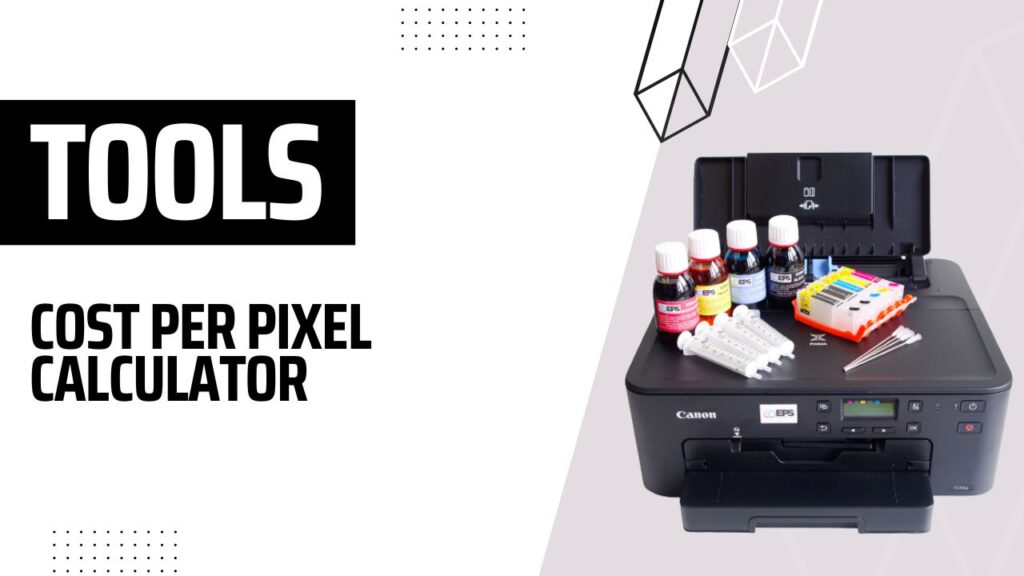
What is Cost Per Pixel?
Cost per pixel is a metric used to evaluate the cost-effectiveness of digital displays or screens. It is calculated by dividing the total cost of the display or screen by the number of pixels it contains.
This metric is particularly useful when comparing displays or screens of different sizes and resolutions, as it provides a standardized way to assess the cost per unit of display area.
How to Use the Cost Per Pixel Calculator
Our Cost Per Pixel Calculator is a user-friendly tool designed to help you quickly and accurately calculate the cost per pixel for your digital displays or screens. To use the calculator, follow these simple steps:
- Enter the Display Width and Height: Input the width and height of your display or screen in the appropriate fields, specifying the unit of measurement (e.g., inches, centimeters).
- Enter the Display Resolution: Input the horizontal and vertical resolution of your display or screen in the designated fields. For example, a Full HD display would have a resolution of 1920 x 1080.
- Enter the Display Cost: Provide the total cost of your display or screen in the specified currency.
- Click “Calculate”: Once you have entered all the necessary information, click the “Calculate” button to compute the cost per pixel for your display or screen.
The calculator will then display the following results:
- Total Pixels: The total number of pixels in your display or screen, calculated by multiplying the horizontal and vertical resolutions.
- Cost Per Pixel: The cost per pixel for your display or screen, calculated by dividing the total cost by the total number of pixels.
Cost Per Pixel Calculator
Why is Cost Per Pixel Important?
The cost per pixel metric is essential for several reasons:
- Cost Comparison: It allows you to compare the cost-effectiveness of different displays or screens, regardless of their size or resolution. This is particularly useful when deciding which display to purchase for a specific application or budget.
- Quality Assessment: Generally, a lower cost per pixel indicates a higher-quality display or screen, as more pixels can be packed into a given area, resulting in a sharper and more detailed image.
- Budgeting: By knowing the cost per pixel, you can estimate the total cost of a display or screen based on the desired resolution and size, which can aid in budgeting and planning.
Applications of Cost Per Pixel
The cost per pixel metric finds applications in various industries and contexts, including:
- Digital Signage: When deploying digital signage solutions, cost per pixel can help determine the most cost-effective displays for the desired viewing experience.
- Advertising: In the advertising industry, cost per pixel can be used to evaluate the cost-effectiveness of different advertising mediums, such as billboards or digital displays.
- Broadcast and Production: In the broadcasting and video production industries, cost per pixel can help assess the cost-effectiveness of different cameras, monitors, and display systems.
- Consumer Electronics: When purchasing consumer electronics like televisions or computer monitors, cost per pixel can be a useful metric for comparing different models and brands.
Additional Considerations
While cost per pixel is a valuable metric, it is essential to consider other factors when evaluating displays or screens, such as:
- Display Technology: Different display technologies (e.g., LCD, OLED, LED) can affect image quality, power consumption, and longevity, even with the same resolution and cost per pixel.
- Viewing Distance: The optimal cost per pixel may vary depending on the viewing distance of the display or screen.
- Color Accuracy and Gamut: For applications that require accurate color reproduction, factors like color gamut and color accuracy should be considered alongside cost per pixel.
- Refresh Rate and Response Time: For displays used in gaming, video editing, or other applications that require smooth motion, refresh rate and response time are crucial factors to consider.
By utilizing our Cost Per Pixel Calculator and considering these additional factors, you can make informed decisions when selecting and purchasing digital displays or screens for your specific needs.